NAKS 10D-700-FF Bruksanvisning
NAKS
eksoshette
10D-700-FF
Les nedenfor 📖 manual på norsk for NAKS 10D-700-FF (7 sider) i kategorien eksoshette. Denne guiden var nyttig for 15 personer og ble vurdert med 3.8 stjerner i gjennomsnitt av 8 brukere
Side 1/7

RECEIVING AND INSPECTION
Immediately upon receipt of a shipment, carefully inspect for
damage and shortage. Turn impeller by hand to see that it
turns freely and does not bind. If any damage and/or shortage
is detected or suspected, the carrier must be asked to conduct
an inspection. The consignees representative should not accept
shipment without a notation on the delivery receipt indicating items
not delivered or apparent extent of damage.
When a shipment is opened and damage is found which was not
evident externally (concealed damage), it is mandatory that the
consignee request an immediate inspection by the carrier. Report
damage to the carrier within 15 days. Failure to report damage
within the above time limit will cause rejection of a claim.
HANDLING
When handling fans and their accessories, always use equipment
and methods that will not cause damage. Fans should be lifted
using slings and padding or spreaders to avoid damage.
CAUTION! Always make sure that all lifting and handling equipment
and techniques conform to current safety standards.
Avoid lifting fans in a way that will bend or distort fan parts. Never
pass slings or timbers through the orices of fan.
CAUTION! Do not lift by the fan hood. Fans with special coatings
or paints must be protected in handling to prevent damage.
STORAGE
Fans are protected against damage during shipment. If they
cannot be installed and put into operation immediately upon receipt
certain precautions are necessary to prevent deterioration during
storage. Responsibility for integrity of fans and accessories during
storage must be assumed by the user. The manufacturer will not
be responsible for damage during storage. These suggestions are
provided solely as a convenience to the user, who shall make his
own decision as to whether to use any or all of them.
INDOOR: The ideal storage environment for fans and accessories
is indoors, above grade, in a low humidity atmosphere which
is sealed to prevent the entry of blowing dust, rain, or snow.
Temperatures should be evenly maintained at between 70°F and
105°F (wide temperature swings may cause condensation and
“sweating” of metal parts). Windows should be covered to prevent
temperature variations caused by sunlight. Provide thermometers
and humidity indicators at several points and maintain the
atmosphere at 40% relative humidity, or lower.
It maybe necessary to use trays of renewable desiccant or portable
dehumidier to remove moisture from the air in the storage
enclosure.
Thermostatically controlled portable heaters (vented to outdoors)
may be required to maintain even temperatures inside the
enclosure.
CAUTION! Provide re extinguishers, or re alarms, or emergency
response communication to protect building and equipment against
re damage. Be sure that building and storage practices meet all
local, state and federal re and safety codes.
The following fans or accessories must be stored indoors, in a
clean dry atmosphere:
a. Any fan that is protected by a cardboard carton.
b. Spare wheels or propellers.
c. Boxes, bags or cartons of hardware.
d. Curbs
e. Dampers
Remove any accumulations of dirt, water, ice or snow and wipe
dry before moving indoor storage. Allow cold parts to reach room
temperature to avoid “sweating” of metal parts. Open boxes
or cartons. Remove any accumulated moisture; if necessary
use portable electric heaters to dry parts and packages. Leave
coverings loose to permit air circulation and to permit periodic
inspection.
Rotate wheels or propellers by hand to distribute bearing grease
over the entire bearing surfaces.
Store at least 3 ½” off the oor on wooden blocks covered with
moisture proof paper or polyethylene sheathing. Provide aisles
between parts and along all walls, to permit air circulation and
space for inspection.
OUTDOOR: Fans designed for outdoor use may be stored
outdoors, if absolutely necessary. The storage area should be
reasonably level and drained or ditched to prevent accumulation
of water. Fencing and lighting for security are desirable. Roads
or aisles for portable cranes and hauling equipment are needed.
Consider the use of drift fencing to minimize accumulation of
blowing snow or dirt.
The following fans may be stored outdoors, if dry indoor storage
space is not available:
a. Fans intended for outdoor use that are crated in wood.
b. Wall fans installed in wall housings.
All fans must be supported on wooden blocks or timbers above
water or normal snow levels. Provide enough blocking to prevent
settling into soft ground. Fans should be set in place using the
directional arrow markings on the crate as a guide.
Locate pieces far enough apart to permit air circulation, sunlight,
and space for periodic inspection. Place all parts on their supports
so that rain water will run off, or to minimize water accumulation. Do
not cover parts with plastic lm or tarps-these cause condensation
of moisture from the air passing through heating and cooling
cycles.
Fan wheels and propellers should be blocked to prevent spinning
caused by strong winds.
Read and Save These Instructions
NAKS Form 613157
INSTALLATION & MAINTENANCE INSTRUCTIONS
Direct Drive Exhaust Fans
______________________________________________________________________________________________________________________________
2017 © North American Kitchen Solutions
172 Reaser Court
Elyria, OH 44035
www.naksinc.com
Page 1 of 7
Produkspesifikasjoner
| Merke: | NAKS |
| Kategori: | eksoshette |
| Modell: | 10D-700-FF |
Trenger du hjelp?
Hvis du trenger hjelp med NAKS 10D-700-FF still et spørsmål nedenfor, og andre brukere vil svare deg
eksoshette NAKS Manualer

22 September 2025
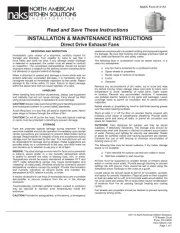
22 September 2025

22 September 2025

21 September 2025
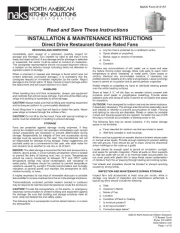
21 September 2025
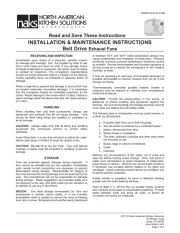
21 September 2025
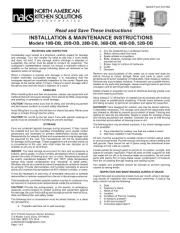
21 September 2025

21 September 2025

21 September 2025
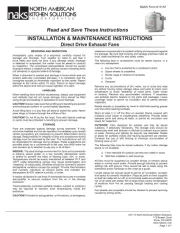
21 September 2025
eksoshette Manualer
- Gorenje
- V-Zug
- Midea
- Jenn-Air
- Falmec
- Fisher Paykel
- De Dietrich
- Concept
- Neff
- Vox
- Caple
- Respekta
- Exquisit
- Fagor
- Toolcraft
Nyeste eksoshette Manualer

21 Oktober 2025

21 Oktober 2025

20 Oktober 2025

20 Oktober 2025
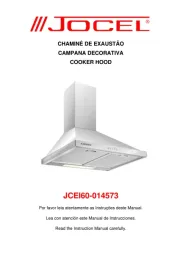
18 Oktober 2025
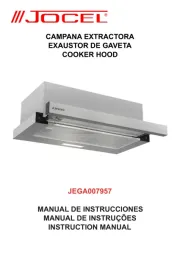
18 Oktober 2025
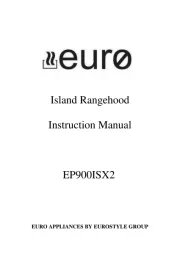
14 Oktober 2025

12 Oktober 2025
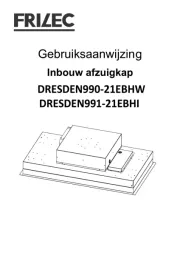
11 Oktober 2025

11 Oktober 2025